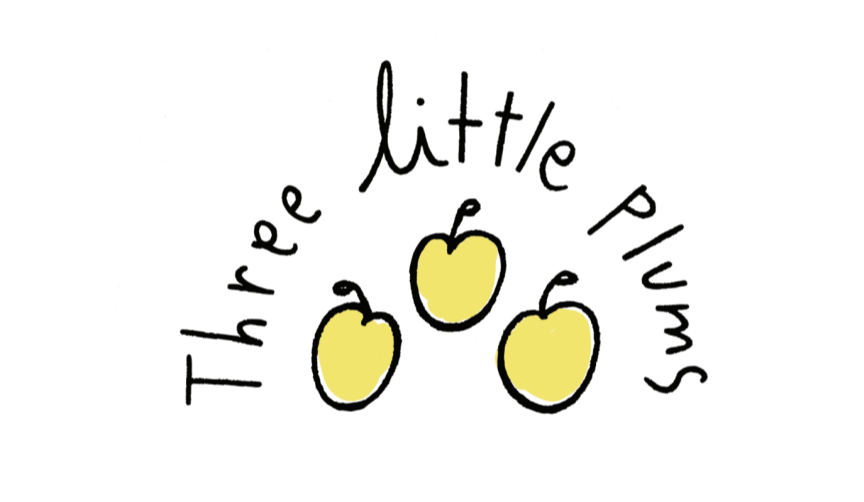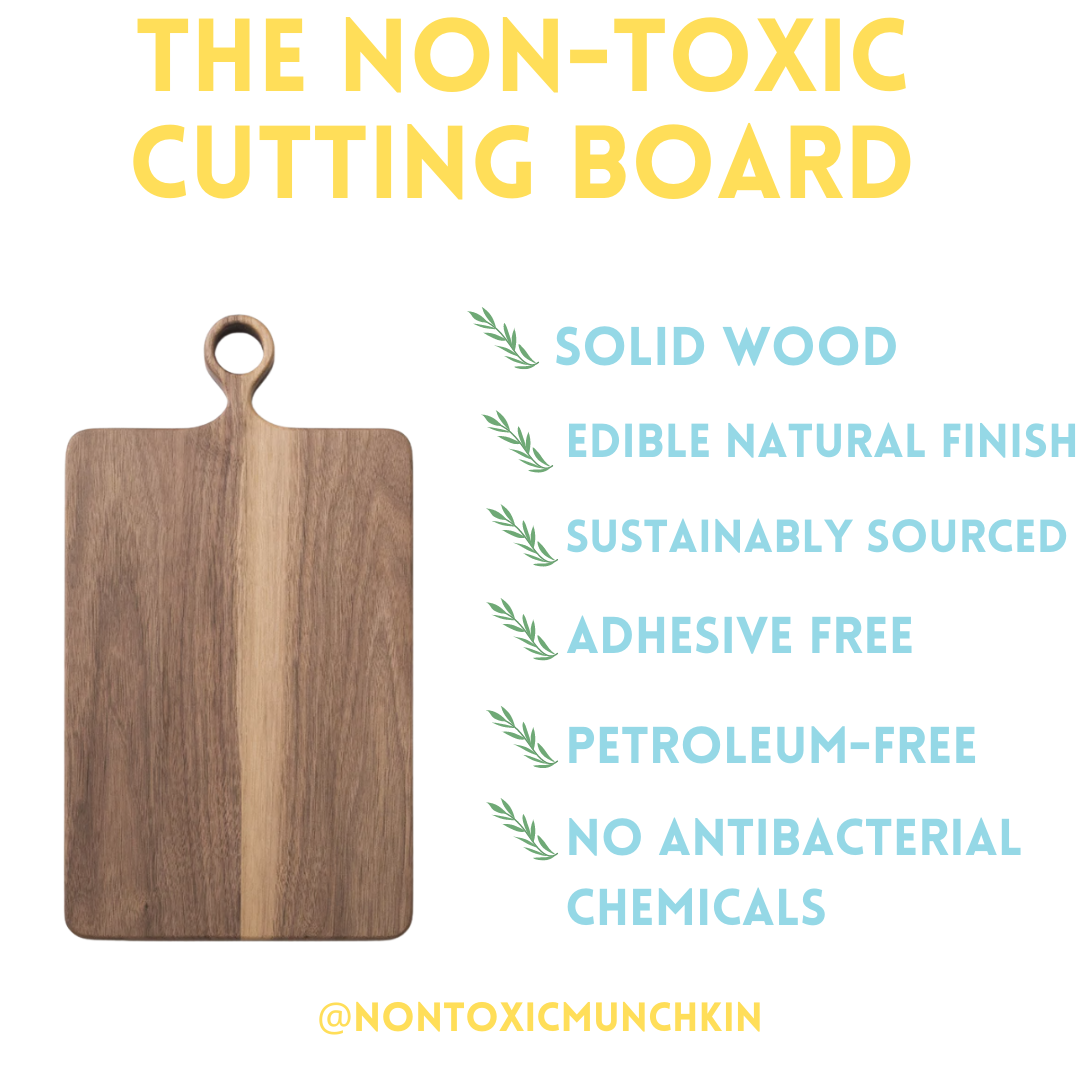Choosing a 'non-toxic' Cutting Board
updated on 11/2025
Should you be worried about potential toxins in your cutting board?
while it might not be the first switch you think to make in your kitchen, it can be a source of harmful chemical h hexposure ; after all you are cutting food on them which you will later consume. So lets dive in and talk about what to avoid and what to look for, instead, so that when its time to replace your cutting board you can replace it with 'non-toxic ' one instead!
CUTTING BOARDS TO AVOID
1. Plastic
- degrades overtime due to use, which leaves grooves where germs and bacteria can settle
- degrades over time due to use, allowing tiny pieces of plastic to migrate into your food
In fact, plastic cutting boards have been found to be a substantial source of micro plastic exposure. A recent study from 2023 found that using a plastic cutting board could generate 15 milligrams of microplastics per cut, and around 50 grams a year — the equivalent of 10 plastic credit cards! This is in addition to plastic chemicals like plasticizers, bisphenols and phthalates , that could also be bleaching from the plastic into your food
- often contain (almost always) antibacterial chemicals. These are often labelled with "Antibacterial” or “Prevents Odors” Antibacterial chemicals used, Microban and Triclosan are endocrine disruptors. Additionally, overuse of antibacteria chemicals can lead to antibiotic-resistant bacteria.
2. Bamboo:
- most are made of pieces of bamboo glued together
- The adhesives used are usually melamine-formaldehyde resins which can be a source of exposure to, among other chemicals, formaldehyde.
- bamboo is naturally hard and can thus dull your knives
bamboo cutting board almost always use mineral oil. Mineral oil is a by-product of petroleum. and not something you want to be ingesting. Food safe mineral oil is food safe, but its still a petroleum bu product- I prefer to opt out if possible
I have heard of companies that claim they use formaldehyde free adhesives - I would still be wary as adhesives are still required.
3. Epicurean wood fiber cutting boards
These are thin wood sheets glued together with... formaldehyde containing resins. Because of this not my favorite
4. Composite wood (pieces of wood glued together)
- adhesives often contain formaldehyde and other additives
- often finishes with mineral oil
BETTER OPTIONS
glass and marble
- they dont require antibacteria finishes nor adhesives.
- however: the down side is that they can make your knifes blade's dull
2. TITANIUM CUTTING BOARDS
Recently titanium cutting boards have been popping up, and I get asked about these a lot. While I do not own any of them, from a toxicity perspective, these would also be a good alternative to solid wood. For those who don’t love using solid wood on meats this could also be a good alternative to glass. I believe they could potentially be slightly better than glass cutting boards because it is gentler on knives then glass.
There is a catch (and why its not under the “best’ category) Some titanium cutting boards are actually stainless steel. These are not necessarily a bad option, but they will dull your knives significant quicker. Buying your titanium cutting board make sure it is actually truly titanium. ( one way to know is for the company to provide testing or a certificate showing its true titanium. Sometimes it could be a stainless steel core with titanium outer which could still be a good option. Titanium is heavier than stainless steel.)
According to Corinne Segura a home biologist I have been following for years, Taima is a brand of true titanium cutting boards.
BEST
The ideal material for a cutting board?
Hands down the winner is solid hard wood
- with proper maintenance and care they can last many many years. This means: wash with soap and water and dry thoroughly ( either hand dry or place vertically to dry, making sure water is not cooling at the base). Spread a very thin layer of beeswax every two weeks to four weeks to maintain condition properly
- if you choose solid wood you dont have to worry about glues , nor other chemicals being used to manufacture the material
- wood is naturally antibacterial (but, yeah, you still have to wash it after use)
- best woods I would say are maple and walnut. Maple is slightly harder than walnut. Both should be oiled/ treated with beeswax every month or so for optimal performance and lifespan
- note: always ask what is used to seal or treat the wood. Look for wooden cutting boards that use edible safe finishes like:
Beeswax
Carnauba Wax
Coconut Oil
MCT Oil
Linseed Oil (from flaxseeds)*
Walnut Oil
Avoid finishes like:
No Lacquers
No Petroleum-Based Mineral Oil—even if food grade
What if a solid wood cutting board is not in your budget?
Ok, no worries, your next best options are:
True Titanium
2. glass (but this could be damaging to your knifes
3. wood cutting board made with pieces of wood glued together BUT that can verify they use formadlehyde free and food grade adhesives and do not use mineral oils for finish or a solid wood cutting oil treated with food grade mineral oil BUT use a non mineral oil sealer at home…..
SHOPPING GUIDE
Craftcookware ( Etsy) i was gifted one of these after the fire and truly love it. They are large and heavy and beautiful we made. This is the shop is currently. ( 7/2025) taking a short break, but my understanding is that they will be back soon
2. Palumba
Material: Cherry Wood
Finish: Three BEEautiful Bees All Natural Beeswax Polish
I have three of these and I love their smaller sizes because I use them anytime, I need to cut a quick fruit or veggie and it’s small size makes it super easy to clean and condition . Meet in the US.
3. Hinoki solid wood cutting board
Material: Hinoki Cypress Wood
Not coated. Naturally mold resistant. Made in Korea.
4. Mamma magia solid wood cutting boards also made in the US
5. Treeboard
Made in the US, Treeboard makes solid slab cutting boards out of one solid piece of oak, cherry, or maple.
They are finished with raw linseed oil and carnauba wax.
6. Virgina Boys
They have various models and styles of cutting boards but all are made with in the USA with certified sustainably grown walnut wood and Every purchase plants a tree. The downside is that they are not one solid piece of wood they do have some glue….
Prices start at $50
Walnut Wood Cutting Boards - Reversible with Juice Groove (Walnut, 8x12)
7. Salzmark cutting boards
made from a single piece of maple wood. Made in the USA
Prices start at $229
https://salzmark.com/products/salzmark-flagship-cutting-board
Cutting Board conditioners
sources
https://www.sciencedirect.com/topics/chemical-engineering/phenolic-resins

